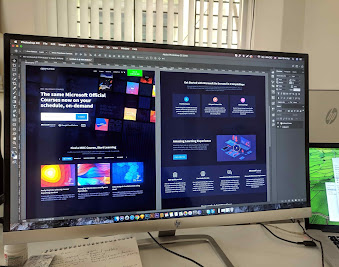Web design
In this article we will discuss about web designing and development in a factual and informative manner.
With this article you will learn how to create web design, UI design, and UX design with relevant facts and tips. You will find only the relevant information and exercises that are easy to comprehend by following these steps.
Web Designing, UI Design and UX Design are not only art of designing something on website, but they are also essential part of your website's success.
When it comes to Web Designing, UI Design and UX Design, it is essential that users find what they are looking for as quickly as possible and this can be achieved by making your site accessibility easy for the visitors. The Google search engine may lower your ranking if your web pages are hard to navigate.
Web Designing
Web designing is defined as a process of developing a website to meet the requirements of business. Web designing includes HTML, CSS, JavaScript , python etc.
HTML stands for Hypertext Markup Language. This language is used to create HTML documents or web pages. Web pages are defined by HTML tags such as headings, subheadings, etc. Unlike static websites, dynamic websites are created using Java script which runs on client's browser on entering the URL on browser's address bar. Many dynamic websites include more interactivity and user interface by using various tools like jQuery Mobile, PHP, AJAX etc.
Generally, a web design consists of the following elements:
The design experience of website owners plays a significant role in making a website attractive. In spite of the similarities between aesthetically pleasing and user-friendly sites, there are fundamental differences between them. A UI designer is focused more on how a website will be used in real by the visitors. It is there responsiblity that visitors get what they are looking for at faster rate possible.
By keeping navigation consistent from page to page on their websites, UI designers ensure that their clients' websites are easy to use.
✅User experience designing (UX)
A user experience designer creates products and services that users can use in an optimal, meaningful way. A user experience design strategy incorporates visual design, interaction design, information architecture, and product strategy. The purpose of user experience design is to create an enjoyable or beneficial user journey through a system or website by incorporating usability engineering and cognitive science concepts. A user interface is created based on the requirements and needs of the user in a timely and cost-effective manner.
The primary role of a UX Designer is to create a user interface that provides an optimal user experience, without considering technological, manufacturing, or marketing factors. A second part of the process involves evaluating the interface and deciding if it needs to be changed. A UX designer is also capable of working on mobile apps and websites.
Web development
Building websites involves the use of programming languages and tools. After developing a website, the designs created by web designers become fully functional websites.
It can be done with a variety of tools and software program such as HTML (hypertext markup language), Java, Javascript, jQuery, Node.js, PHP, SQL, ASP.NET, Python, etc.. In which website development is carried out.
Working with UX designers, UI designers, and visual designers, web developers develop web pages according to a design (layout) provided by designers.
Developing a fast and functional website is the primary goal of web development.
👉Web development process(7-stages)
1. Project definition or info
2. Planning
3. Design
4. Creating unique content
5. Development
6. Testing website
7. Maintenance





0 Comments